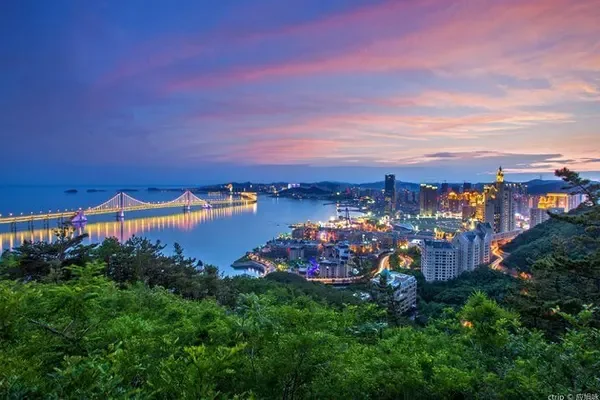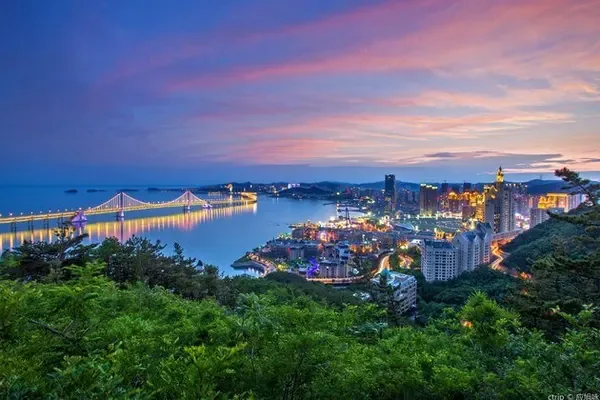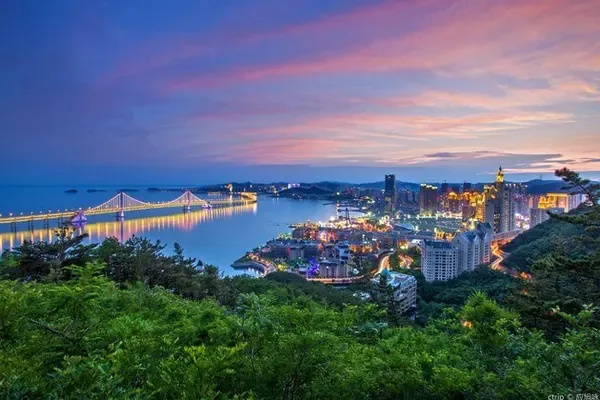With the increase of families with cars, there are more and more friends who like to drive by themselves. Hebei, which is far away from Beijing, is one of the many options for self-driving tours in Beijing. Especially with the continuous development of global tourism, many tourist attractions and scenic spots have gradually poured into the field of vision of self-driving tours. Although these places are not well-known, they are well worth a visit.

I remember that during the Ching Ming Festival in 2009, the reporter took an unforgettable trip by self-driving in Chicheng, Hebei. Ordinarily, the three-day public holiday is not long or short for people in the capital who want to travel. But if you really want to go too far, time will definitely not allow it. After thinking about it, Hebei Province, which is close to Beijing, is a good choice. So for the reporters who wanted to travel, after careful selection, they finally went to Chicheng County, Hebei Province, which is less than 200 kilometers away from Beijing, for a two-day spring outing. Unforgettable trip to Akagi.

At 8 a.m. on April 4, 2009, a group of four journalists drove from downtown Beijing to Chicheng, Hebei. After exiting Beijing from Badaling Expressway, enter Beijing-Zhangjiakou Expressway and walk for tens of kilometers. From Huailai Exit to Hebei Provincial Highway, it takes more than an hour to arrive at Chicheng County.

Under the navigation prompt of the GBS satellite locator, I walked westward for less than ten kilometers from the county seat, passing a large archway across the highway with the inscription "The First Spring Outside the Pass" on one side and "Hangu Hot Spring" on the other side, and entered Chicheng Hot Spring Resort Scenic Area, finally, after driving for more than two hours in total, at around 11:30, the reporter and his party arrived at Chicheng Zidian Hotel where they stayed.

After lunch, accompanied by Hu Jianzhong, then deputy director of Zhangjiakou Tourism Bureau, and Yang Zhanpo, then deputy director of Chicheng Tourism Bureau, the reporter and his party first went to visit the site of Hangu Hot Spring, the first spring outside Chicheng Pass. The spring site is located on the west side of the road not far south of the hotel where the reporter stayed. Before coming to the scenic spot, I saw a painted archway of "Tangquan" standing majestically in front of the scenic spot.

Pass through the archway and climb up the stone steps to enter the scenic spot. Hu Jianzhong and Yang Zhanpo, directors of the bureau, told reporters that Chicheng Hot Spring, located in the valley of Cangshan Mountain 7.5 kilometers west of Chicheng County, is also known as Tangquan, and is known as "the first spring outside the customs" in history. It is 140 kilometers away from Zhangjiakou. The entire Chicheng County has a quiet environment and a pleasant climate.

There is a lot of construction going on here, and the scenic and painted corridor is built along the mountain in a winding way. When entering the scenic spot, the first thing you see is a newly built gray stone tripod.

A short walk around Shiding is a pavilion with carved beams and painted buildings. The main hot spring is in the middle of the pavilion. I saw that the spring in the pavilion covered by the iron grate was steaming amidst the rumbling sound.

On one side of the pavilion is a stone tablet inscribed in the Kangxi era with the inscription "Xin Xin". On the hillside on the south side, there are two stone monuments, one is "the first spring outside the pass" and the other is "hangu hot spring". Behind the pavilion is a landscape under construction, which consists of a huge pen holder with three writing brushes inserted and a set of text walls introducing hot springs. Climbing up again along the south side of the text wall is a wall view composed of brown ancient seal characters. On the seal script wall is an ancient building under repair among the pines and cypresses.

Chicheng Hot Spring is located in the deep valley of Cangshan Mountain at an altitude of 942 meters. The annual average temperature is 5.7°C, and the average temperature from June to August in summer is 20.1°C, which is 7.6°C lower than that of Beijing. It is an ideal summer resort. The hot spring resort is 3.5 kilometers long from east to west, 0.7 kilometers wide from north to south, and covers an area of 2.45 square kilometers. "In the windy and sandy land outside Mo Dao, there are four seasons of spring at this time." In the area, there are beautiful peaks and ridges, green pines and cypresses, and a quiet environment. In spring, peach and apricot blossoms are in full bloom, covering the mountains and plains, and the scenery is charming; after autumn, the leaves of pagoda birch are red, colorful and beautiful.

There are general springs, stomach springs, eye springs, flat springs, bronchial springs and cold springs in the hot spring resort. The total spring (also known as rolling pool) has the largest flow rate (0.516 cubic meters per minute) and the highest temperature (68°C). The total alkalinity is 4.9 and the acidity is 8.0. The spring water contains more than 30 kinds of chemical substances, trace elements and radioactive elements such as sodium, potassium, calcium, magnesium, iron, lithium, chloride ion, sulfate, carbonate and bicarbonate. It is a highly curative mineral water.

Hundreds of years of balneotherapy practice and scientific research results in recent years have shown that the hot spring water in Chicheng is good for rheumatism, rheumatoid, hypertrophic arthritis, frozen shoulder, allergic dermatitis, cold waist and leg pain, eczema, ringworm, It has a significant curative effect on skin diseases such as urticaria, and the cure rate is over 80%. An ancient poem: "If you don't look for the old dragon saliva in the East China Sea, you will always think of the first spring outside the pass. Taking a bath here will cure your illness, and it will be better than swallowing a thousand grains of longevity pills."

The "Record of Famous Springs in China" comprehensively inspects the water quality and temperature of hot springs, and ranks the total spring as the second in the country, which can be called "the first spring in the west of Beijing". The best season for bathing in hot springs is the third month of the lunar calendar, which is called "peach blossom water". There are temple fairs on March 3rd and April 18th of the lunar calendar every year, to thank the jellyfish goddess for giving holy water and benefiting all generations;

Chicheng Hot Spring has a development and utilization history of more than 2,000 years. The "Shui Jing" written by Sangqin in the Western Han Dynasty is the earliest record of hot springs. In the "Shui Jing Zhu" written by Li Daoyuan of the Northern Wei Dynasty, there is a saying that "there is actually Tangquan in the north of Yuyang (southwest of Miyun County, Beijing today), and it is three hundred miles to Yanjing (Beijing)". In the Sui and Tang Dynasties, it was turned into a Taoist temple, and there were temples of considerable size. There were many pavilions in the Liao and Jin Dynasties, but they were destroyed by soldiers in the Yuan Dynasty. In the fifth year of Xuande in the Ming Dynasty (1430 A.D.), Yang Hong, the famous border guard general Changping Hou, rebuilt Ruiyun Temple by the spring.

In the sixth year of Wanli in the Ming Dynasty (AD 1578), Huang Yingsu, the censor of Zhili, and others set up an inscription of "the first spring outside the Guan" in the hot spring, and the hot spring became famous all over the world. The emperors of several dynasties had their sights on this geomantic treasure and set up palaces beside the spring. The holy emperor Yelu Longxu once stayed at this spring. In the first month of the 11th year of Kangxi in the Qing Dynasty (AD 1672), Kangxi accompanied his imperial grandmother to bathe here for 51 days, and ordered Geng Zhaozhong, a young teacher of the prince, to inscribe the word "Xinxin" personally, leaving many popular legends.

Leaving the hot spring resort, the reporter and his party drove to Chicheng Yunzhou Reservoir for sightseeing. The car passed through Chicheng County and walked northward for about ten kilometers before arriving at the dam of Yunzhou Reservoir.

Standing on the dam and looking out, the vast blue water under the blue sky and white clouds can't be seen at a glance. Perhaps due to the low temperature, the water surface has not completely melted, and some waters are still frozen, but it does not affect the magnificent beauty of the reservoir.

The directors Hu Jianzhong and Yang Zhanpo told reporters that the construction of the Yunzhou Reservoir started in 1969, was completed in October 1970 and put into operation, and was basically completed in 1987. A total of 870,000 cubic meters of earth and stone, 9,300 cubic meters of masonry, 18,600 cubic meters of concrete, and 3.7 million workers were employed. The state invested 14.71 million yuan, of which the county raised 4.37 million yuan. The embankment is 43 meters high, the dike crest is 183 meters long and 6 meters wide, the reservoir area is 3 square kilometers, the water depth is 25 meters, and the water storage capacity is 113.7 million cubic meters.

The completion of the Yunzhou Reservoir in Chicheng stopped the Baihe River, which has been rebellious every time there was a heavy rain in history, and irrigated 46,000 mu of arable land in 144 villages in 4 townships and towns downstream. Opening the gate to release water to Beijing every year is another clean water area next to Hebei Guanting Reservoir that provides drinking water services for the people of the capital. There was a poem that praised it like this: "The dam is endless, the high gorge is out of the Pinghu Lake, and the stone carvings have left a long history. It is famous all over the west of Beijing."

Below the reservoir dam is the Longmen Cliff rock carving landscape in the Longmen Gorge Scenic Area. Longmen Gorge, commonly known as Sheshen Cliff, also known as Heifengkou and Dugumen, is located in the upper reaches of Baihe River, 15 kilometers north of Chicheng County. The two peaks confront each other, the walls stand thousands of feet high, and all the waters beyond the Great Wall converge here.

The "Longmen Gorge couplet" engraved on the stone wall of Sheshen Cliff vividly describes this: "Longmen Pass is outside the Dragon Gate, and outside the pass is heavy. The clouds accumulate daily, and the rain returns from the ancient times. The majestic cliff expresses , The cliff is hidden between the heaven and the earth. The shape is better than the ages and the key is the key, and the Huns dare not cross the Yinshan Mountain."

Longmen Gorge has been an important route out of the fortress since ancient times, and the generals and literati on the frontier all have the elegance of "returning from the journey to set the inscription". Therefore, the hard cliffs are full of excellent poems and prose.

There are more than 20 Yuan and Ming stone carvings on the stone wall, such as "Three Road Throat", "Xiongzhi Jifu" and Longmenya couplets, all of which have witnessed the importance of Longmenya's strategic position in history.

Among these cliff stone carvings, the "Shuofang Barrier" inscribed by Sun Yuxian, the censor of the Ming Dynasty, has strokes like pillars, strokes as big as cattle, and a hundred feet of jedi. It is magnificent and magnificent.

The most spectacular stone carving should be the statue of a sacrificial man carved next to the Guanyin Pavilion on Dongbanya. A woman sits in a lotus pot with a quiet and radiant face. According to legend, this woman is the 19-year-old daughter of Qianhu Tiankun, a 19-year-old daughter of Qianhu Tiankun who was stationed in Cangshang Fort next to Longmen Gorge in "Cimu Zhibian". Sheshen Cliff got its name from this.

Zhao Weiping of the Ming Dynasty praised with emotion: "It's hard to sacrifice one's life, but it's even harder to sacrifice one's life to become righteous; it's difficult to sacrifice one's life to become a righteous man, especially a woman. Hey! The festival of frost, the firmness of iron and stone, the fierceness and fierceness, will last for thousands of years." In addition, Longmen Ya also left many amazing verses. The stone carvings on the Longmen Cliff in Chicheng have recorded the vicissitudes of history and also witnessed the heroic feats of modern people.

Driving away from the group of stone carvings on Sheshen Cliff, the reporter and his party headed eastward for a short distance, and finally came to an ancient temple in the foothills of the mountain. This ancient temple, named Huguo Temple, was built to be verified.

According to the inscriptions, it can only be traced back to Jiajing Renchen in Ming Dynasty. Through the inscription on the restoration of Huguo Temple: "The temple hides Qianyan, the road leads to the avenue, controls the Qianghu, and shields Shenjing, so it is named Huguo Temple." It can be verified that the Huguo Temple was built after the "civil engineering change" in the Ming Dynasty to ensure the safety of the people and the country. It is said that the cave already existed when Empress Dowager Xiao (Liao) was rebuilt in Ming and Qing Dynasties.

Although this ancient temple was severely damaged during the Cultural Revolution, a Daxiong Hall is being built on the side of the Huguo Temple after some lay Buddhists donated money spontaneously.

When climbing to the Huguo Temple with dozens of levels, you can see the statue of Guanyin Bodhisattva enshrined here, and the incense is still burning in the temple. According to the monks here, the birthday of Avalokitesvara Bodhisattva had just passed two days ago, so a few days ago, the incense here was extremely prosperous, and it can be said that there was an unprecedented scene in the deep mountains.

Night view of Tangquan River in Chicheng (Photography - Chen Hao)
A whole afternoon of spring outing in Chicheng, I feel very comfortable. Especially on the way back that night, when passing through Chicheng County, the night scene of the long flowing Tangquan River in the center of the county is like a flowing bright and charming light ribbon, which is very beautiful. The excitement of the first day of sightseeing in Chicheng is still unfinished, adding a few good memories... (Photo: Feng Ganyong)


